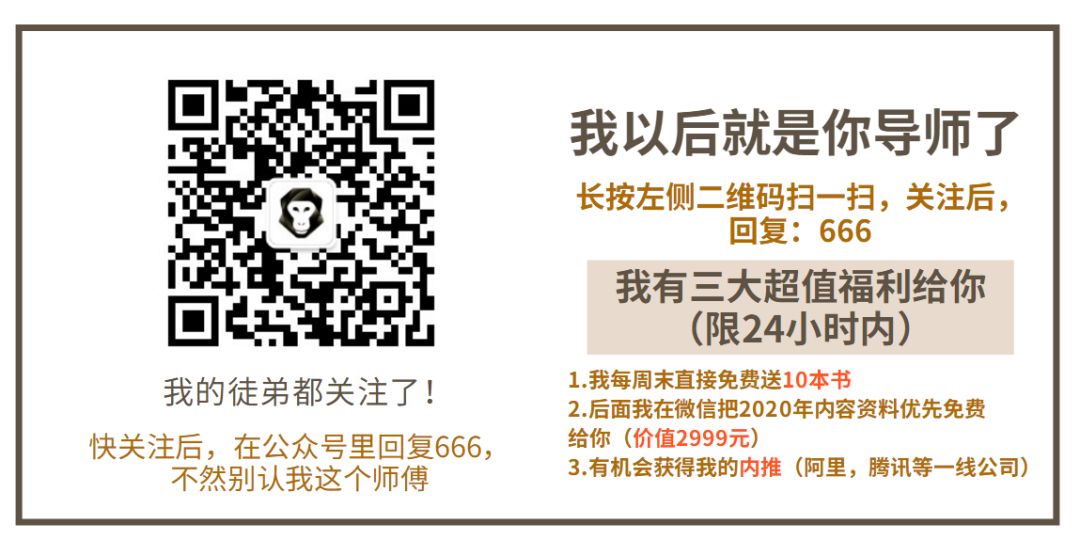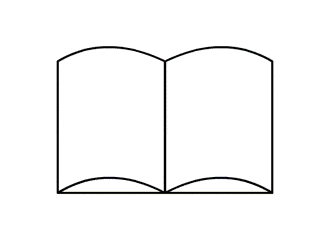
 阅读本文约需要8分钟
阅读本文约需要8分钟
大家好,我是你们的导师,我每天都会在这里给大家分享一些干货内容(当然了,周末也要允许老师休息一下哈)。上次老师跟大家分享了JS 之函数式编程术语总结的知识,今天跟大家分享下Vue 之异步更新机制和nextTick原理的知识。
1 Vue 之异步更新机制和nextTick原理参考文献:https ://www.cnblogs.com/chanwahfung/p/13296293.html
前言 最初更新是 vue核心 实现之一,在整体流程中预先着手观看者更新的调度者这一角色。大部分观察者更新都会通过它的处理,在适当时机让更新有序的执行。而nextTick作为替代更新的核心,也是需要学习的重点。 本文你能学习到:初步更新的作用
nextTick原理
初步更新流程
js运行机制
在理解初步更新前,需要对 js 运行机制进行了解,如果你已经知道这些知识,可以选择跳过这部分内容。 js 执行是单线程的,它是基于事件循环的。事件循环大致分为以下几个步骤:所有同步任务都在主线程上执行,形成一个执行栈(执行上下文堆栈)。
主线程之外,还存在一个“任务队列”(task queue)。只要初始化任务有了运行结果,就在“任务变量”之中放置一个事件。
一旦“执行栈”中的所有同步任务执行完毕,系统就会重新“任务类别”,看看里面有什么事件。那些对应的初始化任务,于是结束等待状态,进入执行栈,开始执行。
主线程不断重复上面的第三步。
为什么需要初步更新
既然异步更新是核心之一,首先要知道它的作用是什么,解决了什么问题。 先来看一个很常见的场景:created(){ this.id = 10 this.list = [] this.info = {}}nextTick原理
异步更新内部是最重要的就是nextTick方法,它负责将异步任务加入队列和执行异步任务。 VUE 也将它暴露出来提供给用户使用。在 数据 修改完成后,立即获取相关DOM还没那么快更新,使用nextTick便可以解决这一问题。认识nextTick
官方文档对它的描述: 在下一DOM更新循环结束之后执行连续的替代。在修改数据之后立即使用此方法,获取更新后的DOM。// 修改数据vm.msg = 'Hello'// DOM 还没有更新vue.nextTick(function () { // DOM 更新了})// 作为一个 Promise 使用 (2.1.0 起新增,详见接下来的提示)vue.nextTick() .then(function () { // DOM 更新了 })内部实现
在 vue 源码2.5+后,nextTick的实现单独有一个 js 文件来维护它,它的内核并不复杂, 代码 实现不过100行,稍微花点时间可以啃下来。 比特位置在src / core / util /下一步 js ,接下来我们来看一下它的实现,先从入口 函数 开始:export function nextTick (cb?: Function, ctx?: Object) { let _resolve // 1 callbacks.push(() => { if (cb) { try { cb.call(ctx) } catch (e) { handleError(e, ctx, 'nextTick') } } else if (_resolve) { _resolve(ctx) } }) // 2 if (!pending) { pending = true timerFunc() } // $flow-disable-line // 3 if (!cb && typeof Promise !== 'undefined') { return new Promise(resolve => { _resolve = resolve }) }}cb即预期的最大值,它被push进一个回调回调,等待调用。
等待的作用就是一个锁,防止后续的nextTick重复执行timerFunc。timerFunc内部创建会一个微任务或宏任务,等待所有的nextTick同步执行完成后,再去执行回调内部的替代。
如果没有预先设定的,用户可能使用的是Promise形式,返回一个Promise,_resolve被调用时进入到。
// Here we have async deferring wrappers using microtasks.// In 2.5 we used (macro) tasks (in combination with microtasks).// However, it has subtle problems when state is changed right before repaint// (e.g. #6813, out-in transitions).// Also, using (macro) tasks in event handler would cause some weird behaviors// that cannot be circumvented (e.g. #7109, #7153, #7546, #7834, #8109).// So we now use microtasks everywhere, again.// A major drawback of this tradeoff is that there are some scenarios// where microtasks have too high a priority and fire in between supposedly// sequential events (e.g. #4521, #6690, which have workarounds)// or even between bubbling of the same event (#6566).let timerFunc// The nextTick behavior leverages the microtask queue, which can be accessed// via either native Promise.then or MutationObserver.// MutationObserver has wider support, however it is seriously bugged in// UIWebView in iOS >= 9.3.3 when triggered in touch event handlers. It// completely stops working after triggering a few times... so, if native// Promise is available, we will use it:/* istanbul ignore next, $flow-disable-line */if (typeof Promise !== 'undefined' && isNative(Promise)) {const p = Promise.resolve() timerFunc = () => { p.then(flushCallbacks) // In problematic UIWebViews, Promise.then doesn't completely break, but // it can get stuck in a weird state where callbacks are pushed into the // microtask queue but the queue isn't being flushed, until the browser // needs to do some other work, e.g. handle a timer. Therefore we can // "force" the microtask queue to be flushed by adding an empty timer. if (isIOS) setTimeout(noop) } isUsingMicroTask = true} else if (!isIE && typeof MutationObserver !== 'undefined' && ( isNative(MutationObserver) || // Phantomjs and iOS 7.x MutationObserver.toString() === '[object MutationObserverconstructor]')) { // Use MutationObserver where native Promise is not available, // e.g. Phantomjs, iOS7, Android 4.4 // (#6466 MutationObserver is unreliable in IE11) let counter = 1const observer = new MutationObserver(flushCallbacks)const textNode = document.createTextNode(String(counter)) observer.observe(textNode, { characterData: true }) timerFunc = () => { counter = (counter + 1) % 2 textNode.data = String(counter) } isUsingMicroTask = true} else if (typeof setImmediate !== 'undefined' && isNative(setImmediate)) { // Fallback to setImmediate. // Technically it leverages the (macro) task queue, // but it is still a better choice than setTimeout. timerFunc = () => { setImmediate(flushCallbacks) }} else { // Fallback to setTimeout. timerFunc = () => { setTimeout(flushCallbacks, 0) }} 优先级为promise.then> MutationObserver> setImmediate> setTimeout。也很重要,它们能帮助我们理解设计的意义)
我们会发现在某种情况下创建的timerFunc,最终都会执行一个flushCallbacks的
函数
。
优先级为promise.then> MutationObserver> setImmediate> setTimeout。也很重要,它们能帮助我们理解设计的意义)
我们会发现在某种情况下创建的timerFunc,最终都会执行一个flushCallbacks的
函数
。
const callbacks = []let pending = falsefunction flushCallbacks () { pending = falseconst copies = callbacks.slice(0) callbacks.length = 0 for (let i = 0; i < copies.length; i++) { copies[i]() }}初步更新流程
数据 被改变时,触发watcher.update// 源码位置:src/core/observer/watcher.jsupdate () { /* istanbul ignore else */ if (this.lazy) { this.dirty = true } else if (this.sync) { this.run() } else { queueWatcher(this) // this 为当前的实例 watcher }}// 源码位置:src/core/observer/scheduler.jsconst queue = []let has = {}let waiting = falselet flushing = falselet index = 0export function queueWatcher (watcher: Watcher) {const id = watcher.id // 1 if (has[id] == null) { has[id] = true // 2 if (!flushing) { queue.push(watcher) } else { // if already flushing, splice the watcher based on its id // if already past its id, it will be run next immediately. let i = queue.length - 1 while (i > index && queue[i].id > watcher.id) { i-- } queue.splice(i + 1, 0, watcher) } // queue the flush // 3 if (!waiting) { waiting = true nextTick(flushSchedulerQueue) } }}每个监视者都有他们自己的id,当没有记录到对应的监视者,即第一次进入逻辑,否则是重复的监视者,则不会进入。这一步就是实现监视者去重的点。
将watcher加入到体重中,等待执行
等待的作用是防止nextTick重复执行
function flushSchedulerQueue () { currentFlushTimestamp = getNow() flushing = true let watcher, id // Sort queue before flush. // This ensures that: // 1. Components are updated from parent to child. (because parent is always // created before the child) // 2. A component's user watchers are run before its render watcher (because // user watchers are created before the render watcher) // 3. If a component is destroyed during a parent component's watcher run, // its watchers can be skipped. queue.sort((a, b) => a.id - b.id) // do not cache length because more watchers might be pushed // as we run existing watchers for (index = 0; index < queue.length; index++) { watcher = queue[index] if (watcher.before) { watcher.before() } id = watcher.id has[id] = null watcher.run() } // keep copies of post queues before resetting stateconst activatedQueue = activatedChildren.slice() const updatedQueue = queue.slice() resetSchedulerState() // call component updated and activated hooks callActivatedHooks(activatedQueue) callUpdatedHooks(updatedQueue)}function resetSchedulerState () { index = queue.length = activatedChildren.length = 0 has = {} if (process.env.NODE_ENV !== 'production') { circular = {} } waiting = flushing = false}总结
初始更新机制使用微任务或宏任务,基于事件循环运行,在 vue 中对性能起着至关重要的作用,它对重复重复的watcher进行过滤。而nextTick根据不同的环境,使用优先级最高的初始任务。 此类的好处是等待所有的状态同步更新完成后,再一次性渲染页面。用户创建的nextTick运行页面更新之后,因此能够获取更新后的DOM。 今天就分享这么多,关 于Vue 之异步更新机制和nextTick原理的 知 识点 ,你学会了多少? 欢迎在留言区评论,对于有价值的留言,我们都会一一回复的。如果觉得文章对你有一丢丢帮助,请点右下角【 在看 】,让更多人看到该文章。





















 8845
8845











 被折叠的 条评论
为什么被折叠?
被折叠的 条评论
为什么被折叠?








